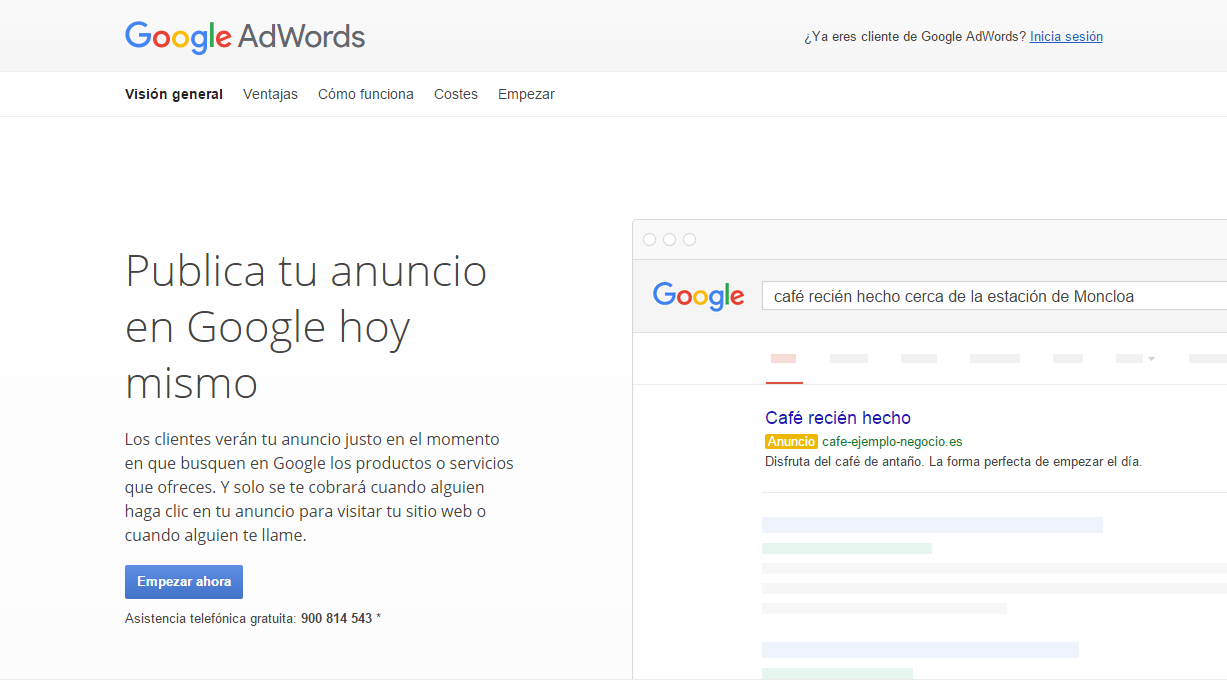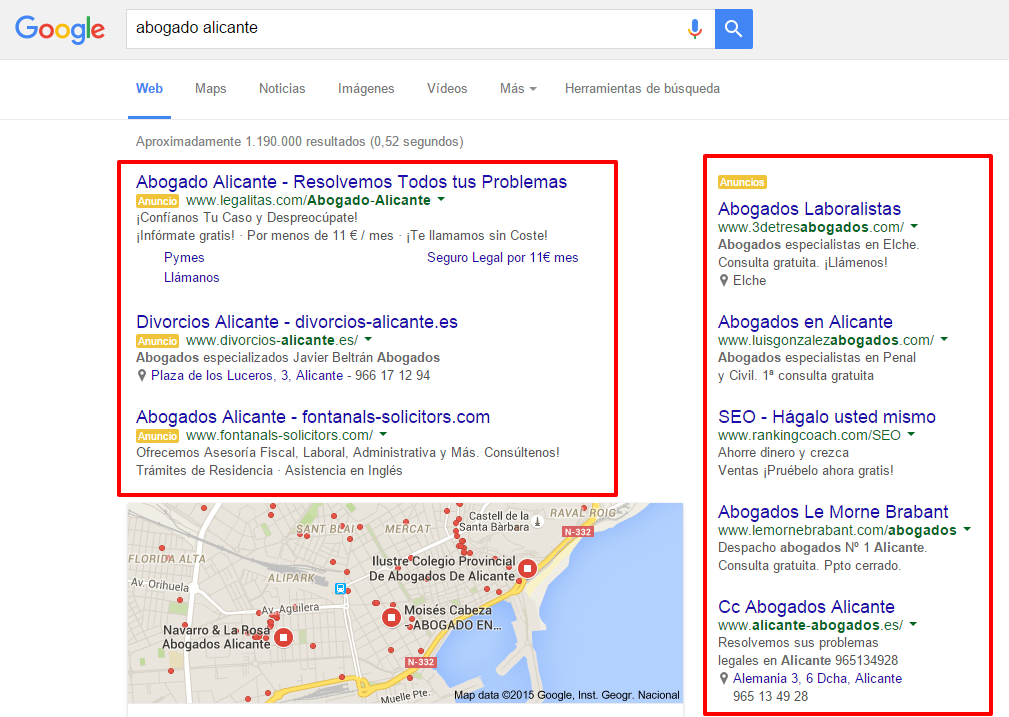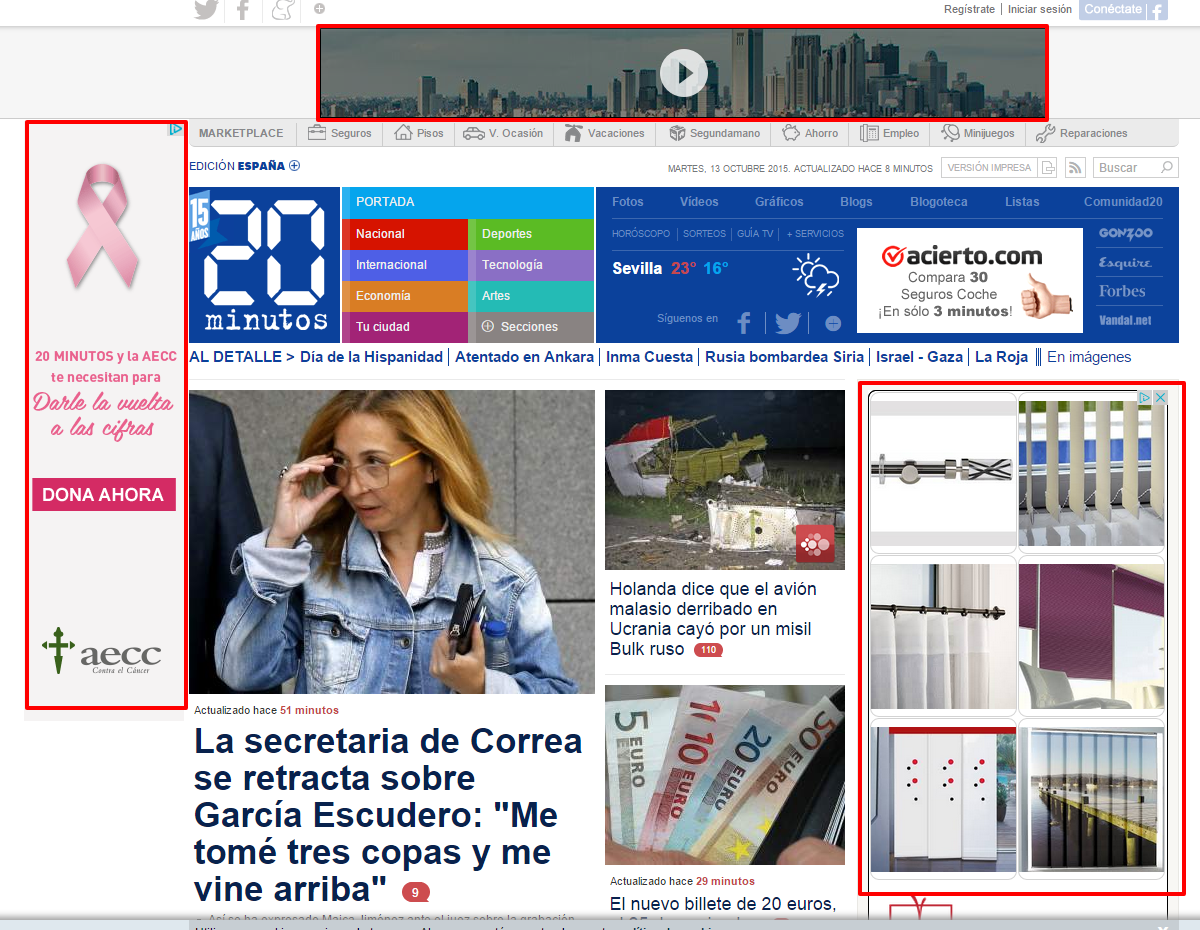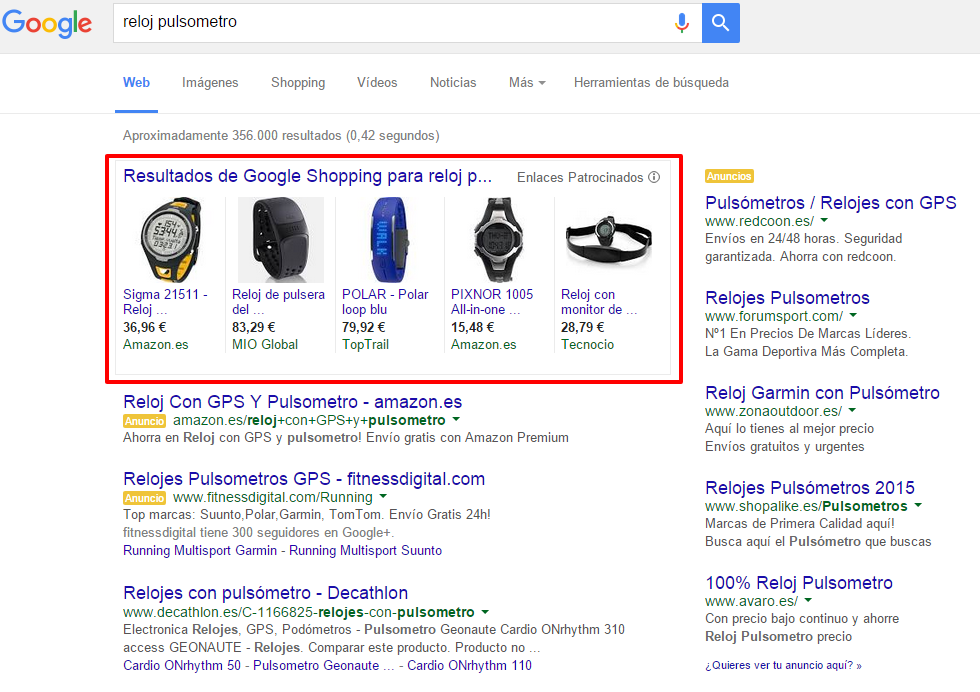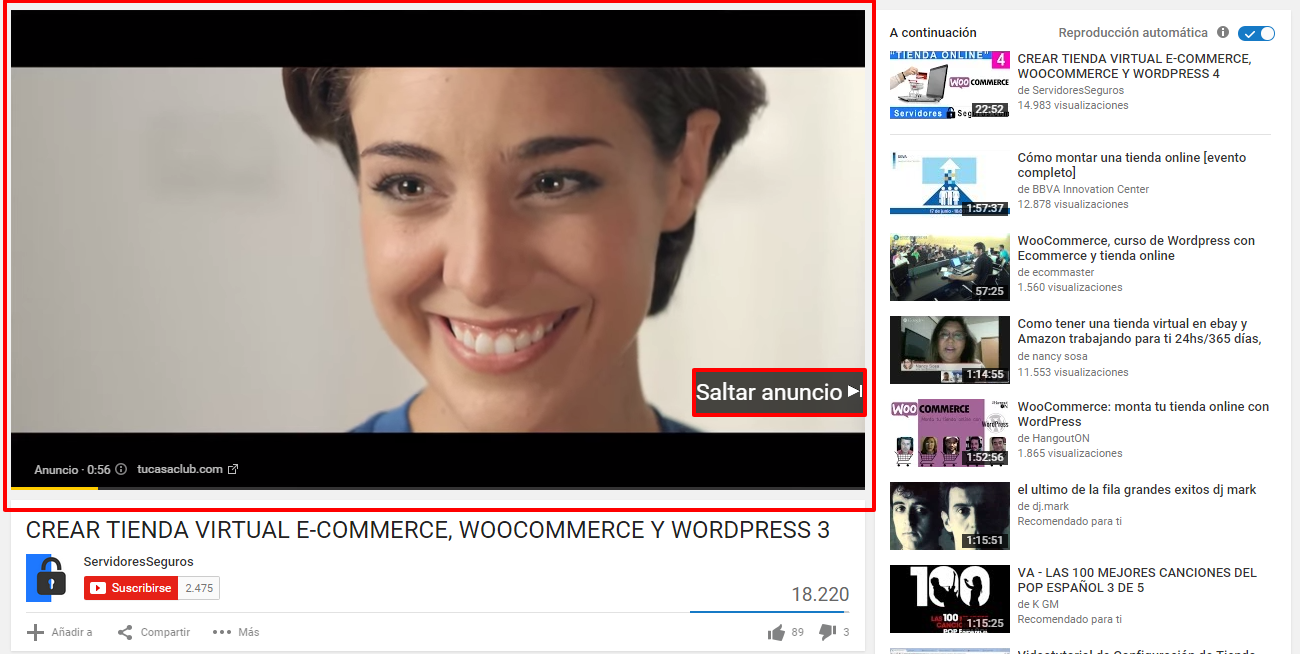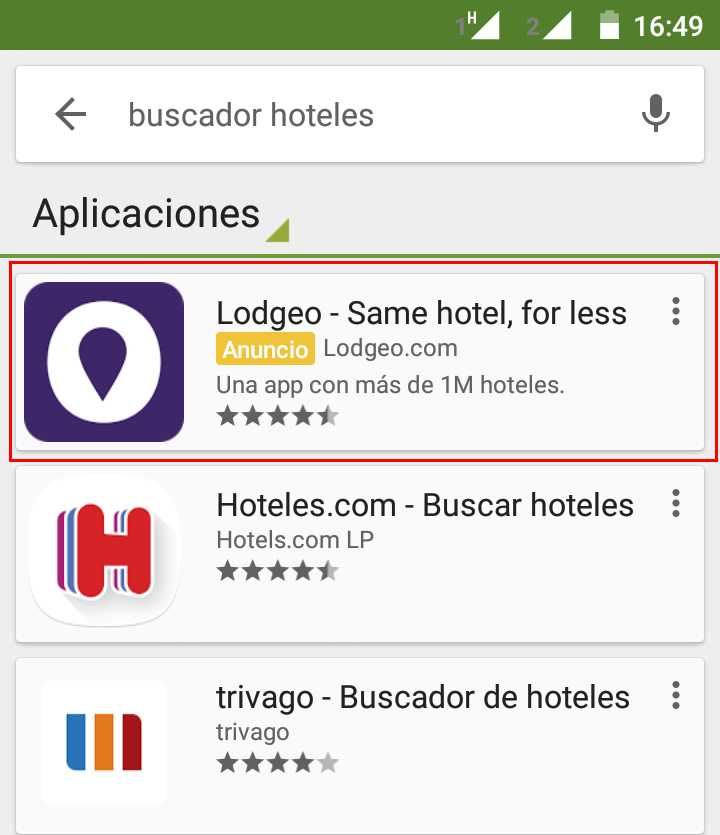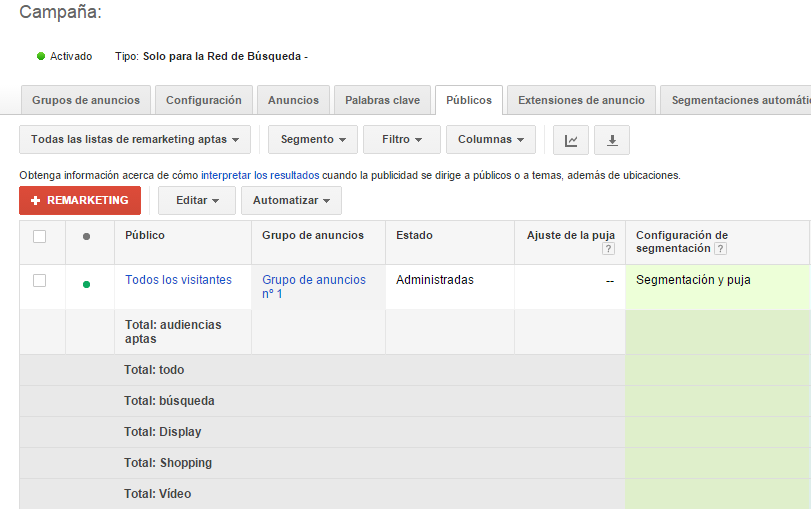Written by Juan Daniel Fuentes
Google AdWords, now rebranded as Google Ads, is Google’s platform used to manage ad campaigns in the media it has available. Basically, there are two groups of media where the ads appear. On the one hand, the pages that are owned by Google, such as its search engine, the Youtube video community, Gmail, Google Maps, etc. And on the other, in a large set of websites, mobile apps and video content called a network of partner advertisers. This pool of partner advertisers comes from programs such as Google AdSense or DoubleClick Ad Exchange publisher sites and numbers in the millions.
Google’s philosophy for the platform is that advertisers get a positive ROI with advertising campaigns, therefore it establishes bidding strategies (payment for advertising) that can be attractive and profitable for the advertiser. In general, all campaigns work on a cost-per-click (CPC) bidding strategy, although there are variants such as advanced CPC, cost-per-view (CPV) for videos. There are also other strategies such as cost per thousand (CPM) for display campaigns or cost per acquisition (CPA).
CPC is usually the common bidding strategy for all campaigns.
In addition, Google AdWords establishes a quality system (Quality Score) within the platform that is used to calculate the cost of advertising and the position where the ads are placed. For example, it is possible for an advertiser paying a CPC of 0.10€ to have ads in a better position than another advertiser paying 0.20€ CPC due to the quality of the ads.
AdWords establishes a quality system that rewards advertisers with higher ranking, obtaining better ad positions at a lower price than other advertisers.
Advantages of Google AdWords
To get traffic, AdWords is a very effective solution, as it has certain advantages over other traffic attraction strategies, such as the following:
Generate immediate traffic
Achieving good positions in the natural results for the most profitable searches involves a considerable investment of effort and patience, and even then, results for a newly published website can take time to achieve. In contrast, a Google AdWords campaign starts producing qualified traffic immediately. If you need visitors on a newly launched domain from today to tomorrow, a Google AdWords campaign may be the most recommended strategy for start your business, while working on SEO to achieve good positions in the medium and long term, and building a database to further develop loyalty and cross-selling strategies.
AdWords is modular
While natural positioning is a strategy that has a great inertia (it takes time both to get good positions and to lose them) AdWords allows, in a very flexible way, to modulate the traffic we want to generate during a very specific period of time. Sometimes we may be interested in increasing visits during times of the year when the natural demand for our products is lower, in order to help balance the seasonal pattern of demand. In other cases, for example, when demand is concentrated at a very specific time of the year, such as Christmas, it is in our interest to invest in order to achieve the highest number of sales. Sponsored links therefore allow us to invest in order to supplement orders during the valleys of demand or to maximize results just when demand is at its strongest.
Affordable for most budgets
Although the average cost-per-click price has increased considerably in recent years, especially for certain categories of particularly competitive products and services, the fact is that the investment required to achieve a quality visit in search engines is maintained, in general, in amounts contained below one euro for many categories. With this strategy, moreover, we are the ones who set a maximum daily investment, a maximum monthly investment and the maximum cost we are willing to pay per visit. By controlling these three values with some common sense, virtually any business can get profitable traffic through Google AdWords.
AdWords is inbound marketing
Although you are paying for visits, the truth is that the visit is originated by the user’s own interest. When the campaign originates from search engines, it is the user’s own search intent that serves to select relevant sponsored links that could also be results of interest to the user, and which the search engines then display alongside the natural results.
Easy to measure ROI
One of the main virtues of AdWords as a traffic attraction strategy is that it allows you to track the visits generated and measure the conversion that these visits have generated. From this conversion, either in the form of lead generation or, directly, sales, we will be able to determine whether it is a profitable strategy or not for our business project. If the profits generated by sales from pay-per-click visitors were greater than the investment needed to generate that traffic, then the strategy is profitable. Otherwise, we will have to look for other alternatives to attract this traffic or we will focus on improving the conversion of our website.
Generates brand recognition
Investing in Google AdWords and being visible in a large number of searches related to our sector contributes to generate a certain brand recognition among our potential customers. Users tend to identify the companies that occupy the first positions in the sponsored links so that finding us repeatedly in those positions will contribute to implant our brand among their acquaintances. This will gradually increase direct traffic and repeat visits, as well as traffic from branded searches, where we can take the greatest advantage of positioning ourselves above our competition.
Allows precise segmentations
Google AdWords not only makes it possible to graduate the investment over time, but also to precisely target the recipients of our advertising and to focus this visibility on the most profitable products and the most attractive offers. In addition, it allows us to concentrate our investment in very specific geographic areas, in precise time periods, as well as certain ranges of hours and days of the week. Since the traffic generated by AdWords costs money, it is essential to segment it very well in order to concentrate resources on those visits that can generate the highest profitability.
In search campaigns, we know exactly what the user is looking for.
If we analyze the searches that generated visits in the natural results of the search engines, we will see how some visitors came to our website from searches that are barely related to our offer. Synonymy and polysemy cause search engines to show as relevant results users whose search intention had little or nothing to do with our content. By contrast, in pay-per-click campaigns, we are the ones who carefully select which searches we want our ads to be included in, and we can write them in a precise way to communicate a very specific offer. This allows us to anticipate and prepare a landing page specially designed to receive the user who is interested in the advertisement. The ad and the landing page work as a tandem to generate a conversion that, if done correctly, should be higher than the average visits originating from natural results.
Types of campaigns
Google AdWords has different types of campaigns, focused on achieving different objectives. With the evolution of the platform and of Internet advertising, it is quite common to come across new types of campaigns designed to obtain a specific type of target. The following is a list of the different types of campaigns that currently exist.
Search campaigns
Search campaigns are those that are directly related to the searches performed by users in the Google search engine. From such a search, related ads are displayed that link to web pages that are potentially interesting to the user.
This type of campaign usually uses only text ads. Ads can be displayed in Google search results, Google Shopping, Google Maps, Groups or search partners.
This type of campaign is usually used to obtain leads or sales, as they usually give good results when the user shows an explicit interest through the search performed.
Display campaigns
This type of campaign shows ads directly, without the user showing intent or interest in the product or service, so, a priori, they will be of less interest to the user than ads shown by search campaigns.
While these types of campaigns are typically used with static image ads, text, rich media and video ads can also be used. These ads may be displayed on websites that show relevant Google Ads, Videos, Mobile Apps, Gmail, YouTube, Blogger, Google Finance and Google Maps.
This type of campaign is focused on increasing the advertiser’s visibility and improving brand recognition.
Shopping Campaigns
Google Shopping campaigns are specially designed to promote products from online stores. As with search campaigns, they display ads when the user performs a related search.
It uses targeted ads, called “product tab ads” that are powered by data uploaded via a data feed. These ads are very complete compared to other types of ads since, in addition to the title and a short description, it shows an image, the price and the store selling the product. These ads may be shown on websites that display Google Shopping ads (in countries where available), on Google search and on Google search partner websites.
This type of campaign is focused on a sales conversion strategy, as it gathers the most important information about the products and presents it in an ad format so that the user has enough information to assess whether the product is interesting or not.
Video campaigns
Video campaigns are specific display campaigns that focus their advertising support on video ads. As with display campaigns, the ads are shown to the user without the user showing interest in the product or service, although there are segmentation tools that allow us to know the user’s interests in order to offer more relevant ads.
The same types of campaigns can be used in this type of campaign as in display campaigns, i.e. static image ads, text ads, rich media and video ads. These ads may be displayed on search results, relevant display network websites, websites displaying Google ads, videos, apps, Gmail, YouTube, Blogger, Google Finance and Google Maps.
This type of campaign is often used to reinforce the brand and gain more visibility. Thanks to video ads, more information can be given than in static images and the impact is usually much greater.
Universal application campaigns
This type of campaign displays ads both by search performed by the user, as well as on websites that have some kind of relationship with the application. It is designed to facilitate the direct download of the APP to the user’s device.
Universal app ads pull ad data from the app’s Google Play listing, from any of the four lines of text provided by the user at the time the ad is created, and optionally by a YouTube video. These ads may be displayed on Google Play, Google’s search engine, search partner network, YouTube, in other applications and on mobile versions of news websites, blogs or other Internet websites.
This type of campaign is used to promote an APP and get it downloaded by users.
Remarketing campaigns
Although it is not a type of campaign but rather a specialty within the search, display and video campaigns, its more than remarkable usefulness makes it essential to talk about them. Remarketing campaigns display targeted ads to users who have visited a web page. Their importance lies in the fact that, by applying the appropriate strategies, they usually give better conversion results than “normal” campaigns, as the advertising impacts on users who already know us.
Campaigns are configured to only show ads to a list of users. This list is configured from the Google AdWords platform and, for example, can be the users that visit the advertised web page.
Both the ads and the locations where they are shown depend exclusively on the type of campaign, since we must not forget that we are talking about remarketing campaigns in search, display or video. Surely in the future remarketing can be used in all types of campaigns available.
References
https://support.google.com/adwords/answer/2567043?hl=en
